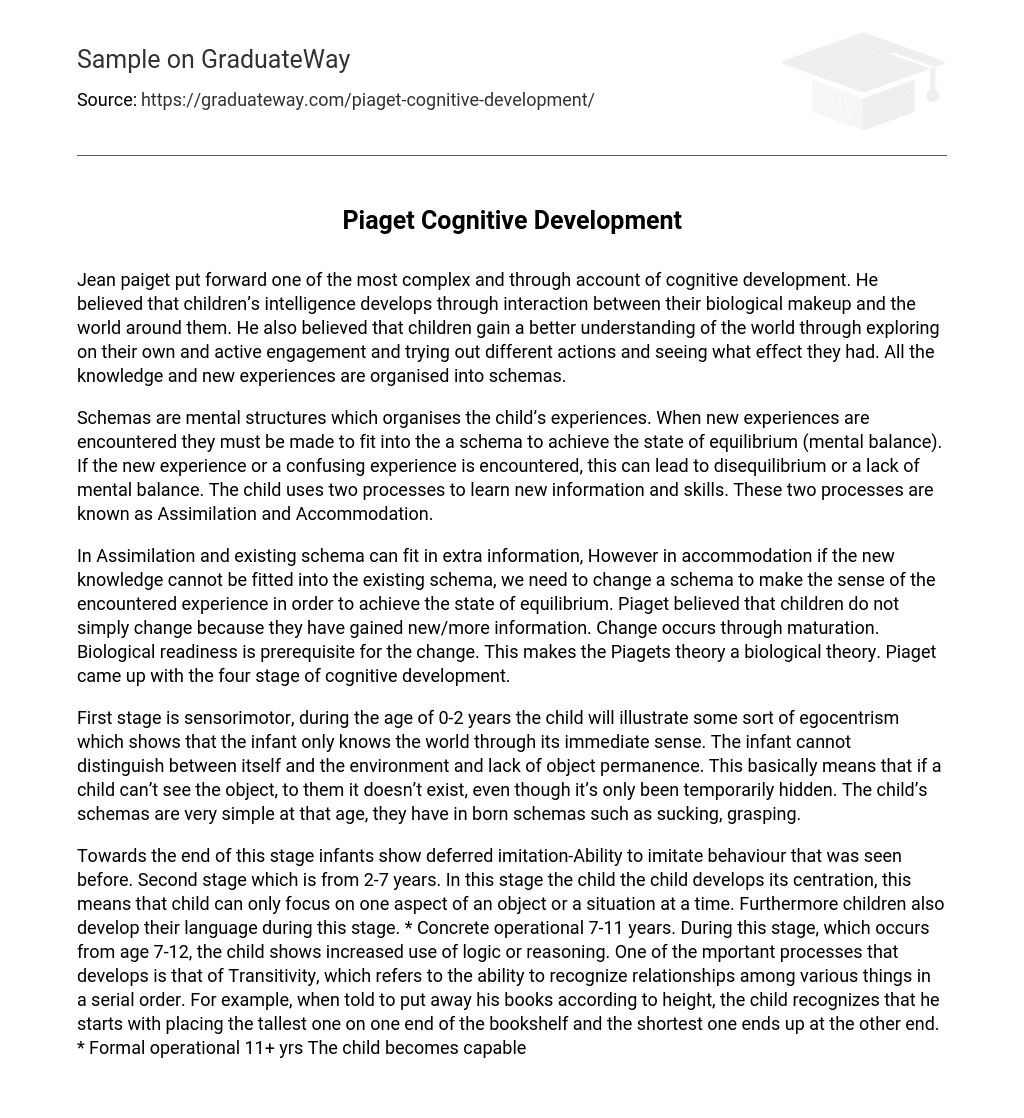Jean paiget put forward one of the most complex and through account of cognitive development. He believed that children’s intelligence develops through interaction between their biological makeup and the world around them. He also believed that children gain a better understanding of the world through exploring on their own and active engagement and trying out different actions and seeing what effect they had. All the knowledge and new experiences are organised into schemas.
Schemas are mental structures which organises the child’s experiences. When new experiences are encountered they must be made to fit into the a schema to achieve the state of equilibrium (mental balance). If the new experience or a confusing experience is encountered, this can lead to disequilibrium or a lack of mental balance. The child uses two processes to learn new information and skills. These two processes are known as Assimilation and Accommodation.
In Assimilation and existing schema can fit in extra information, However in accommodation if the new knowledge cannot be fitted into the existing schema, we need to change a schema to make the sense of the encountered experience in order to achieve the state of equilibrium. Piaget believed that children do not simply change because they have gained new/more information. Change occurs through maturation. Biological readiness is prerequisite for the change. This makes the Piagets theory a biological theory. Piaget came up with the four stage of cognitive development.
First stage is sensorimotor, during the age of 0-2 years the child will illustrate some sort of egocentrism which shows that the infant only knows the world through its immediate sense. The infant cannot distinguish between itself and the environment and lack of object permanence. This basically means that if a child can’t see the object, to them it doesn’t exist, even though it’s only been temporarily hidden. The child’s schemas are very simple at that age, they have in born schemas such as sucking, grasping.
Towards the end of this stage infants show deferred imitation-Ability to imitate behaviour that was seen before. Second stage which is from 2-7 years. In this stage the child the child develops its centration, this means that child can only focus on one aspect of an object or a situation at a time. Furthermore children also develop their language during this stage. * Concrete operational 7-11 years. During this stage, which occurs from age 7-12, the child shows increased use of logic or reasoning. One of the mportant processes that develops is that of Transitivity, which refers to the ability to recognize relationships among various things in a serial order. For example, when told to put away his books according to height, the child recognizes that he starts with placing the tallest one on one end of the bookshelf and the shortest one ends up at the other end. * Formal operational 11+ yrs The child becomes capable of abstract thinking. When child enters this stage it can do mathematic problems in its head, and give abstract reasoning





